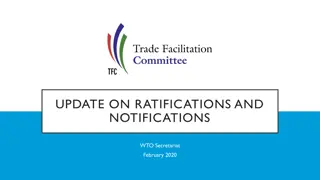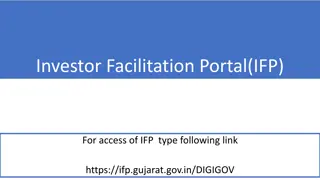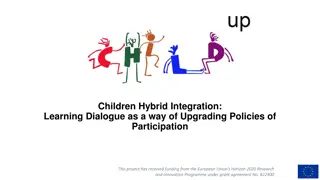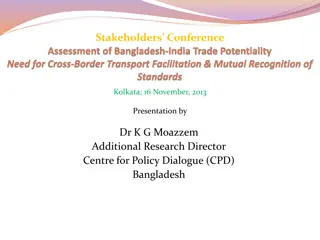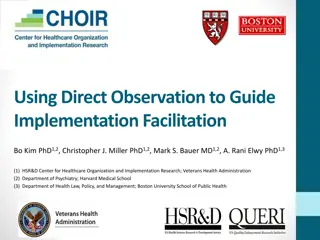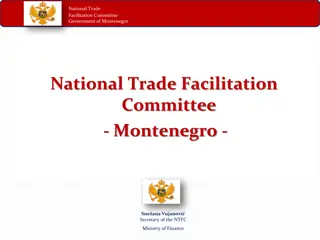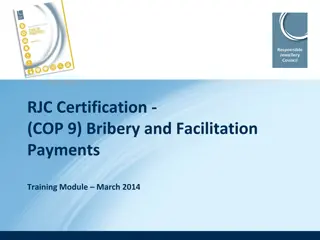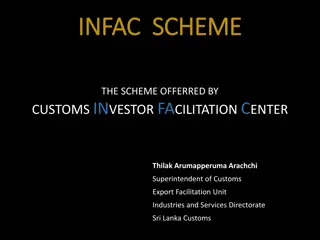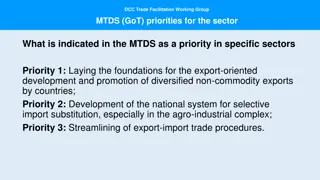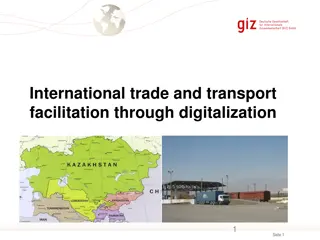
Future Trends and Challenges in VET Workforce Development
Explore the current profile, future trends, and key barriers in the Vocational Education and Training (VET) workforce. Discover insights on workforce shortages, age demographics, digital capabilities, and potential action areas to address these challenges.
Download Presentation

Please find below an Image/Link to download the presentation.
The content on the website is provided AS IS for your information and personal use only. It may not be sold, licensed, or shared on other websites without obtaining consent from the author. If you encounter any issues during the download, it is possible that the publisher has removed the file from their server.
You are allowed to download the files provided on this website for personal or commercial use, subject to the condition that they are used lawfully. All files are the property of their respective owners.
The content on the website is provided AS IS for your information and personal use only. It may not be sold, licensed, or shared on other websites without obtaining consent from the author.
E N D
Presentation Transcript
VET Workforce Blueprint DISCUSSION WITH ACTA M O N D A Y 1 1 D E C E M B E R
Current workforce profile and future trends Current VET workforce profile Future VET workforce trends RTOs are already experiencing workforce shortages across most industries. This is felt most acutely in: VET is a rewarding and attractive career : It is seen as a rewarding career and an opportunity to give back Regional and remote contexts Certain sectors with high industry demand It is seen as an opportunity to transition into a different career from industry Areas requiring specialised skills The workforce is older compared to other industries The workforce is continuing to age. While this bring expertise and experience, it presents some challenges: All workers* 37% 43% 20% Employers need to consider how to manage, support and retain older workers The sector needs to consider how to recruit the next generation VET teachers* 11% 49% 40% In TESOL/LLND, attaining relevant qualifications requires a longer time commitment, making it difficult to quickly address the workforce pipeline 15 - 34 years 35-54 years 55 years and over There is increased demand on VET workforce digital capabilities, both in terms of: There are more casual or non-permanent roles than the wider labour market. Teachers engaging with digital technologies, and Highly mobile workers that make between one and five changes in employment during their career. Teaching students digital literacy skills *Age profile of Australian workers in 2021, JSA 2
VET workforce barriers There are a range of complex, interconnected barriers to attracting, retaining and developing the TESOL/LLND VET workforce. Barriers to entry, including challenges associated with VET qualification requirements and the qualification requirements of accredited training products High administrative and compliance burden Lack of availability of targeted professional development opportunities and resources Complexity and impact of operating environment Challenges due to complex student needs, including additional pastoral care Impact of training products, including focus on assessment Lack of clear career structure and progression pathways Challenges related to digital capability needs (students and practitioners) Challenges relating to employment conditions, including lack of secure employment opportunities Challenges associated with regional and remote locations, including attraction and retention of staff 3
Barriers heatmap results Do these results align with your thinking? Do any of these results surprise you? 4
Potential action areas from conversations with broader VET Potential action areas: Examples of what this could look like: Leverage known motivations for entering the VET workforce Increase awareness and understanding of available VET roles Promote the value of working in the VET workforce and entry pathways Promoting the image and status of the VET workforce Improve incentives to attract new entrants Incentivise TAE training package enrolments and completions leading to engagement in the VET workforce Use a stackable approach for people from industry to complete TAE qualifications Enabling and promoting entry pathways into the VET workforce Improve induction and mentoring processes Develop updated national capability frameworks and/or professional standards Professional development in areas of high need, i.e., supporting students with diverse needs Continuing professional support, development, and progression Support transitions from industry to VET through joint VET/industry appointments Increase and promote flexible pathways between industry and VET, such as through traineeships and other programs Encourage RTOs to engage with industry on solutions to support their VET workforce Strengthening partnerships between industry and RTOs Improving workforce data and planning Consider developing a national, consistent, regular data VET workforce collection Use evidence base for more effective workforce strategy and planning 5
Activity: Actions For each priority barrier, please consider: What action/s could address this? What it looks like in practice in the LLND/TESOL teaching context This could include new actions, or existing examples where you ve seen success You identified some priority barriers / challenges. What actions could address these? How can each action be implemented? Top 3 barriers/challenges you identified: Impact of training products, including focus on assessment 1 Who needs to be involved? What are the key enablers and risks you anticipate in implementing this action? 2 High administrative and compliance burden Challenges relating to employment conditions, including lack of secure employment opportunities 3 What does success look like for this action? 6
Thank you Claire Baldwin Director, VET Student Policy, DEWR VETWorkforce@dewr.gov.au



